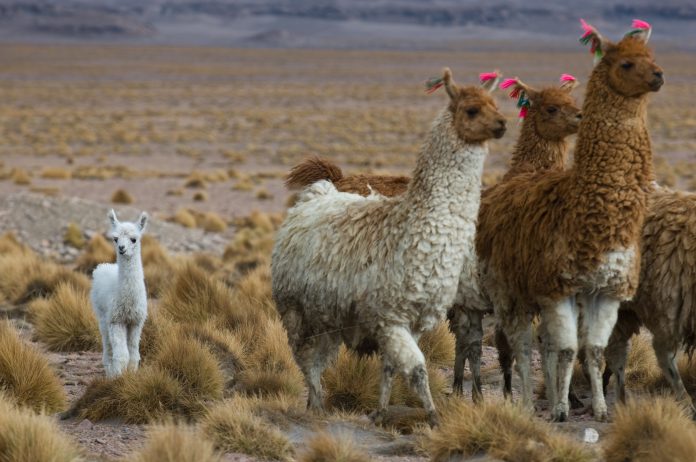Scientists at the University of Pittsburgh are creating COVID-19 antibodies in llamas, to understand how humans could engineer better immune responses
The University of Pittsburgh School of Medicine have found a new way to extract tiny, very powerful SARS-CoV-2 antibody fragments from llamas. These pieces could be turned into inhalable medicines, with the capacity to both treat and prevent COVID-19.
“Nature is our best inventor,” said senior author Yi Shi, Ph.D., assistant professor of cell biology at Pitt.
“The technology we developed surveys SARS-CoV-2 neutralizing nanobodies at an unprecedented scale, which allowed us to quickly discover thousands of nanobodies with unrivaled affinity and specificity.”
Why llama antibodies?
These special llama antibodies, called “nanobodies,” are much smaller than human antibodies and many times more effective at neutralising COVID-19. They’re also much more stable, in comparison to human antibodies which are highly unpredictable.
These nanobodies represent some of the most effective antibody candidates to fight COVID-19, hundreds to thousands of times more effective than other llama nanobodies discovered through the same methods used for decades to look for antibodies helpful to humanity.
How did scientists extract the nanobodies?
Shi and colleagues immunised the llama with a piece of the SARS-CoV-2 spike protein and, after about two months, the animal’s immune system produced mature nanobodies against the virus. Using a mass spectrometry-based technique that Shi has been perfecting for the past three years, lead author Yufei Xiang, a research assistant in Shi’s lab, identified the nanobodies in the llama’s blood that bind to SARS-CoV-2 most strongly.
Then, with the help of Pitt’s Center for Vaccine Research (CVR), the scientists exposed their nanobodies to live SARS-CoV-2 virus and found that just a fraction of a nanogram could neutralise enough virus to spare a million cells from being infected.
just a fraction of a nanogram could neutralise enough virus to spare a million cells from being infected.
The vaccine would be cheaper than using ‘traditional’ antibodies
Shi’s nanobodies can sit at room temperature for six weeks and tolerate being fashioned into an inhalable mist to deliver antiviral therapy directly into the lungs where they’re most needed. Since COVID-19 is a respiratory virus, the nanobodies could find and latch onto it in the respiratory system, before it even has a chance to do damage.
In contrast, traditional SARS-CoV-2 antibodies require an IV, which dilutes the product throughout the body, necessitating a much larger dose. This would cost US patients and insurers around $100,000 per treatment course. If you’re wondering how the vaccines of the world are coming along right now, we have discussed that here.
“Nanobodies could potentially cost much less,” said Shi. “They’re ideal for addressing the urgency and magnitude of the current crisis.”
Study co-author and CVR Director Paul Duprex, PhD, commented:
“As a virologist, it’s incredible to see how harnessing the quirkiness of llama antibody generation can be translated into the creation of a potent nanoweapon against clinical isolates of SARS-CoV-2.”











